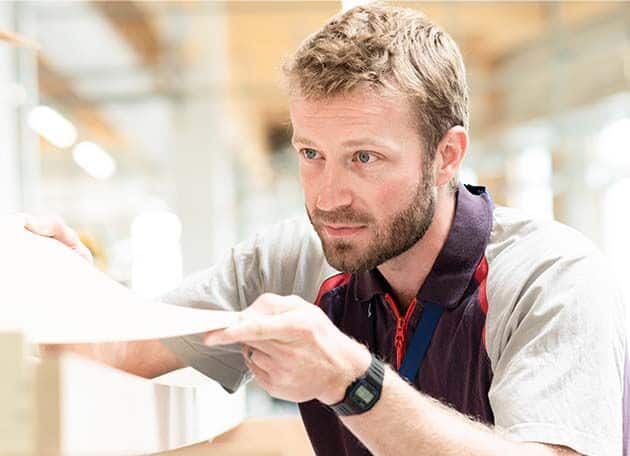A Day In the Life of a Workshop Technician, Cabinet Shop

Following the opening of a new 8,000 aquare meter Production Center at our Basel facility, we speak with workshop Technician Pierre Behra, from the Cabinet Shop, to find out more about how he plays a part in bringing customer's cabin dreams to life.
Hi Pierre, it’s great to catch up with you in our brand-new Production Center! You are currently Workshop Technician in the Cabinet Shop, can you tell us a little bit about your job?
To give you a quick overview, I take part in the preparation to transform a theoretical monument (3D drawing, design, customer request etc.) into the real cabinet. However, my role is a little unique. I started working at the bench as a cabinet marker, specialized in hardwood molding manufacturing. Unfortunately, due to a diagnosis three years ago, I can no longer work on the power tools. However, thanks to the understanding of the management here in Basel, I had the opportunity to stay in Production, with an adapted job that means I am still working closely with my colleagues. Today, I’m working on the upfront preparation regarding the wood moldings and veneer (tooling order, machining sequence, veneer selection, veneer mapping) and some other tasks to support ongoing completion projects.
Thank you for sharing your journey so far. How did you start in cabinetry?
I started as cabinetmaker apprentice with a sandwich course. But as far I can remember I was always experimenting with some DIY project or another in my father’s basement workshop.
Did you always want to be in aviation completions?
I grew up not so far from the airport and I was always an aviation enthusiast. On the other side, I was always trying to build something with my hands, sometimes more successfully than others! One day, I discovered that some people from my town were involved in building VIP aircraft interiors at Jet Aviation Basel. A few years later a good friend of my sister started as a cabinetmaker here and the idea came up. But I started my apprenticeship only after going to university because even though it was clear for me that this was my ideal career, my family and some teachers were not as convinced!
Well, we are very glad to have you! Can you tell us a bit more about how working on aviation cabinetry differs to other types of cabinetry?
When you are building custom fitted furniture for buildings you can do anything that is technically possible, as soon as your skills and tools allow you to perform the different tasks. For aviation cabinetry, the same rules apply, but in addition you have to deal with the constraints around aviation certification. Technically, it’s always more challenging. An aircraft cabin is moving, vibrating, it expands during flight, and temperature can change very rapidly. We have to take all of this into account. The material themselves are also more expensive, so we have to be as efficient as possible in our use of them, and avoid waste or damages. Finally, but possibly most importantly, you can build some residentials pieces of furniture on your own, but to build a VIP aviation cabinet you need a team to cover all sorts of different skills. In my opinion, aviation cabinetry is more complicated, but much more exciting.
“When building aviation cabinetry you have to deal with the constraints around aviation certification… An aircraft cabin is moving, vibrating, it expands during flight, and temperature can change very rapidly. We have to take all of this into account… It is complicated, but exciting.”
It sounds like you have a real passion for your work. What do you enjoy most?
Even if my day-to-day job is predictable, there is always something new to deal with or understand; a new design to discover, new techniques to learn, and interesting colleagues to meet. It’s never boring!
And what are the biggest challenges?
The technical aspects are not so critical. Even if each cabinet is unique we always find a way to manage the issue. I think the time frame is the biggest challenge. The schedule is important and we cannot delay the aircraft delivery so we have to be super reactive while ensuring the highest quality for the customers. As I said before, it’s never boring!
What is a typical day?
It depends on which step we are on in the project, but most of time it begins with checking my mail. Then I go on with veneer mapping or other preparation work for the wood moldings, or 3D checking. If I get a veneer box from our supplier I check the conformity and quality of what I ordered. Most of my tasks consist of being in touch with other departments such as Production Engineering, Design, and Integration, or with suppliers in order to find a better way to make the magic happen. So, it’s very challenging, and I constantly have to adapt to the situation at hand.
What advice would you have to someone who would like to start in a similar role?
Being curious is a good start, then continuing with a good transversal and technical background. Of course, craftsmanship knowledge and skills help a lot. And to finish, a final coat of passion to bring concepts into reality. With this you are fully equipped to be a part of our team!
Thank you for sharing a day in your life with us, Pierre!